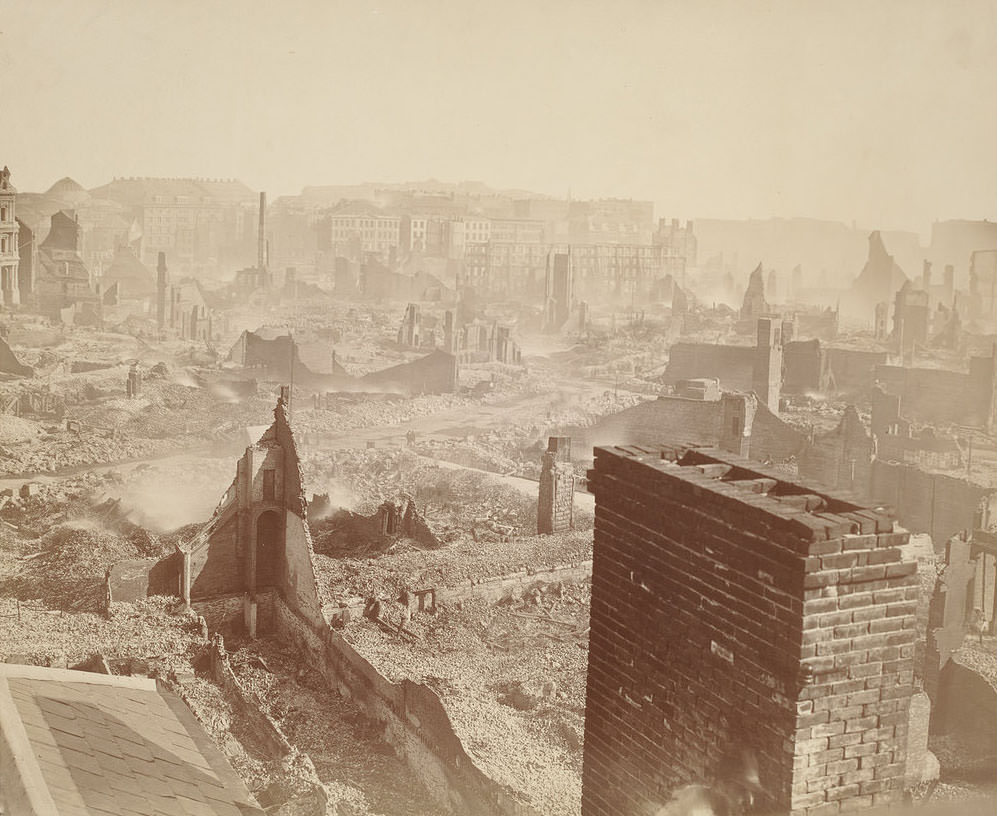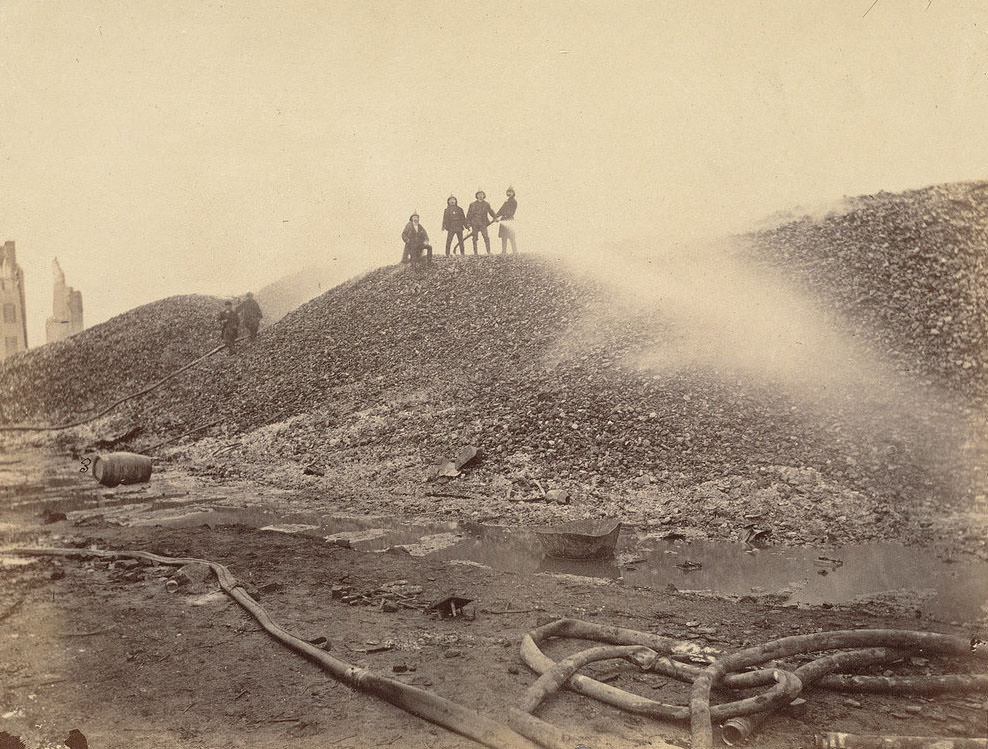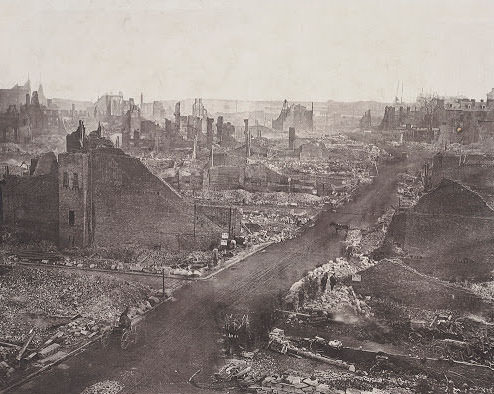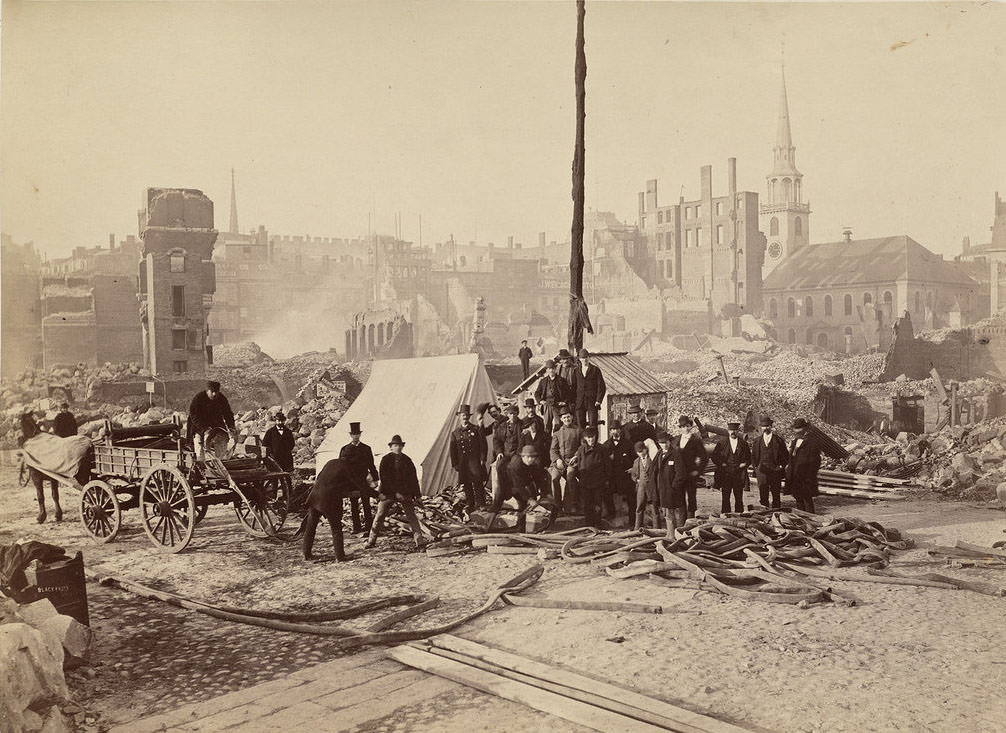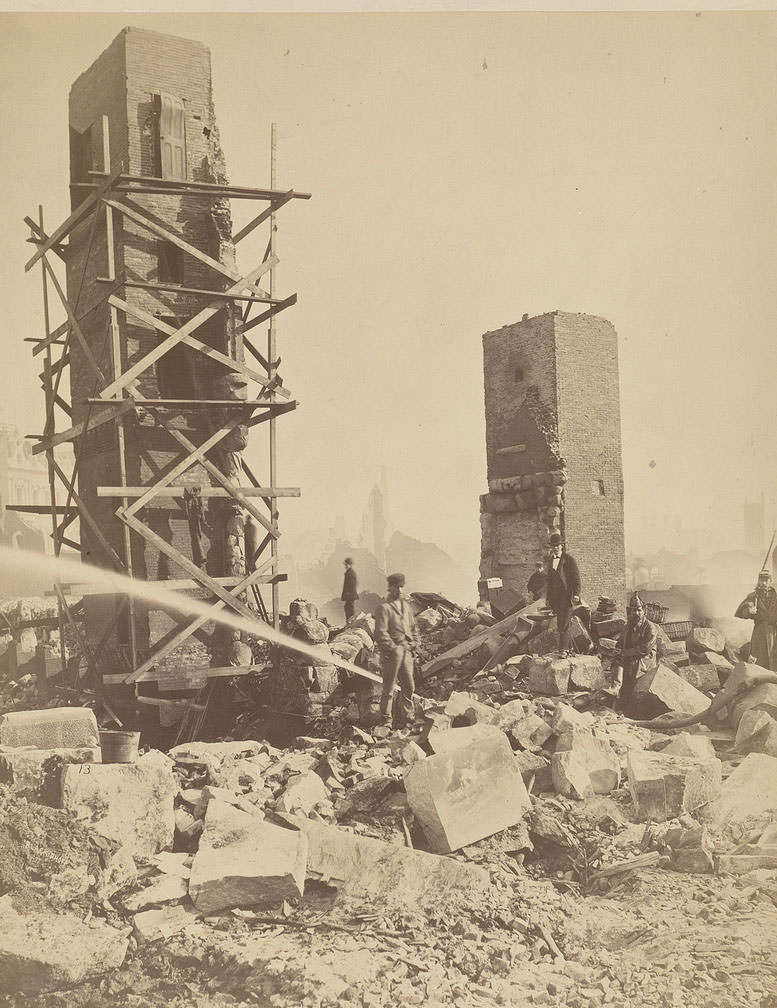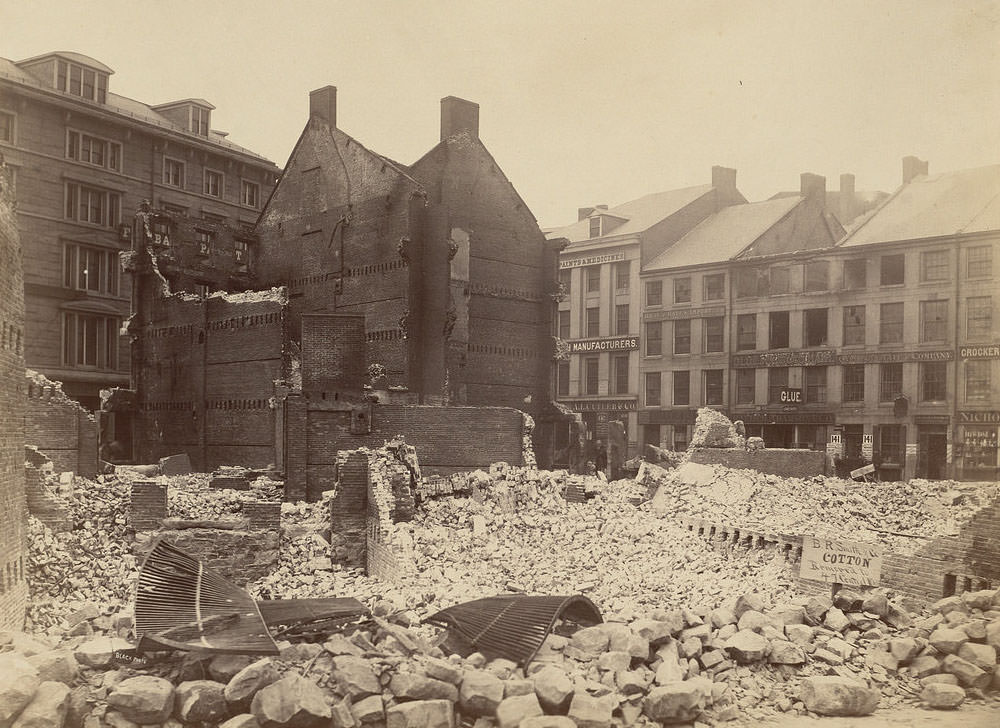A fire broke out in Boston’s commercial district on November 9, 1872. It started around 7:00 pm at the corner of Kingston and Summer streets in Boston’s business district. When the first alarm was sounded, the fire had already engulfed the building. John Damrell requested reinforcements from surrounding areas when the fire spread from rooftop to rooftop. The fire was finally contained 12 hours later after it had burned about 65 acres (of downtown Boston, 776 buildings, and much of the financial district, and caused $73.5 million in damage at the time). Thirty people, including 12 firefighters, died in the disastrous fire.
How the fire started
The fire broke out at Summer and Kingston Streets in a building that stored dry goods for nearby retail stores. The bins of fabric were highly flammable, but it was the construction of the building that allowed the fire to spread so rapidly. The wood elevator shaft in the center of the building caught fire, and very quickly, every floor of the building was ablaze. As the fire quickly spread from the roof to nearby buildings, the firefighters who arrived on the scene realized it was too much for them.
Why did the fire spread so quickly
Several factors contributed to the ignition and spread of the fire. Boston had few building codes at the time, and the ones in place weren’t enforced. Buildings were often made of flammable materials and built close together, and were usually taller than the reach of firefighting equipment at the time. In attics and under the eaves of warehouses, warehouse owners piled products that could not be sold as taxable inventory, increasing fire risks.
Boston’s narrow streets with tight turns, along with its bulky fire engines, also made it difficult for them to maneuver. The entire northeastern United States was afflicted by an equine flu outbreak, leaving fire departments without horsepower and forcing firefighters to exhaust themselves, pulling equipment through the streets.
The city implemented a fire alarm system in 1852, but it worked too well. The boxes were locked, and keys were given to a few trustworthy citizens in each neighborhood because false alarms became a problem. Unfortunately, many critical holders were not found during the Great Boston Fire of 1872. In the decades that followed, building construction practices, firefighting techniques, and alarm systems greatly improved in the city.
Drunks and Looters
There was plenty of firefighters and their equipment and crowds of people in the narrow streets of Boston during the fire. Looters rushed in after building owners to collect whatever they left behind as they raced to retrieve valuables. As the affected area was primarily commercial rather than residential, spectators from residential neighborhoods came to watch the fire. It is believed that more than 100,000 people stood by to watch the fire. In addition to extinguishing the flames, firefighters had to keep people from harm.
The aftermath of the fire
After the fire, citizens formed a committee that urged Boston to redesign the layout of roadways in the damaged areas. Several downtown streets were re-established to be broader and straighter due to this proposal. Post Office Square was created at the intersection of Milk, Congress, Pearl, and Water Streets as part of the restructuring. Some rubble from the destroyed buildings was moved into the harbor to expand Atlantic Avenue. Boston also approved increased funding for the fire department.
Below are some rare historical photos that depict the Destruction and aftermath of the Great Boston fire 1872.












